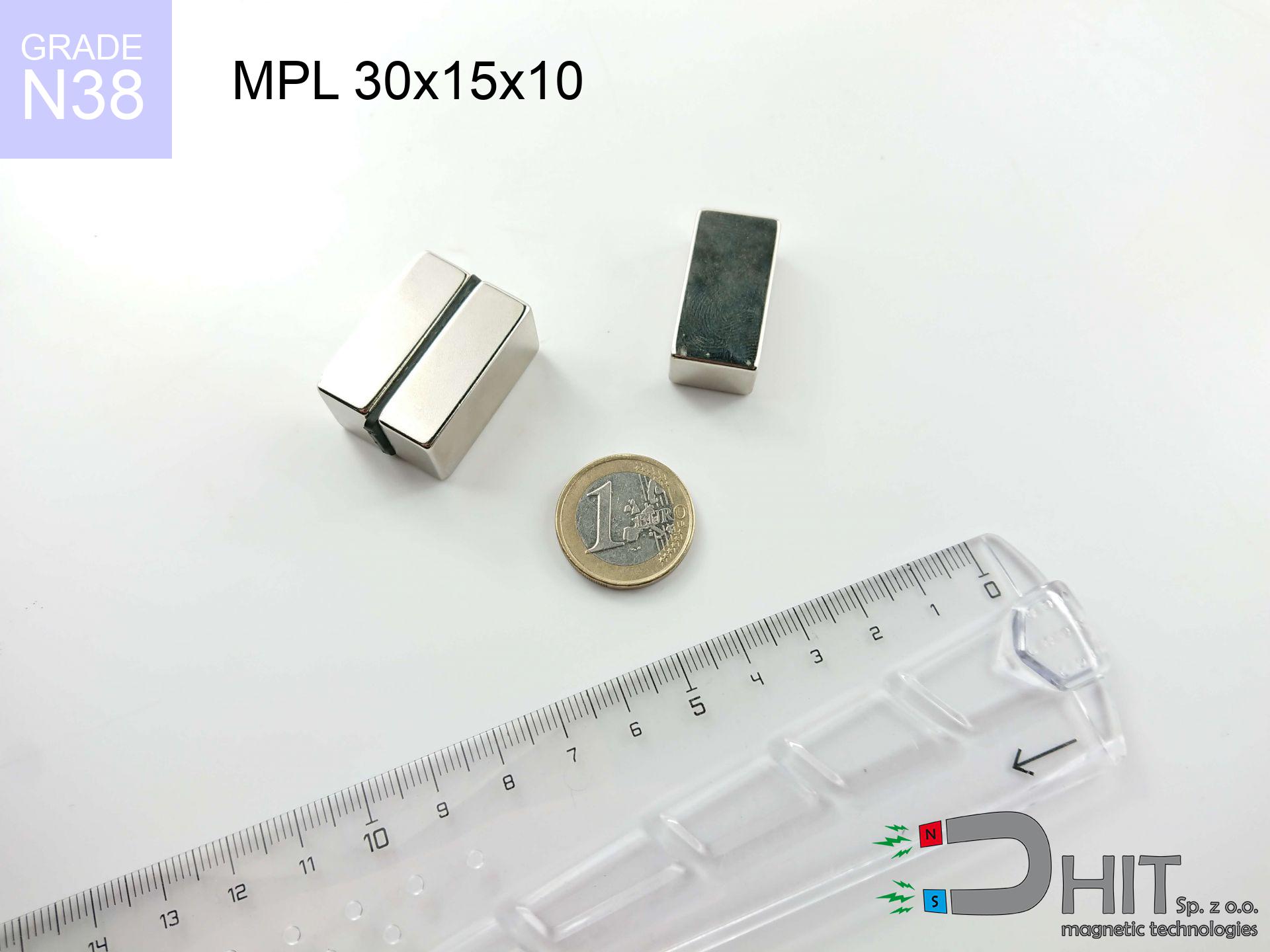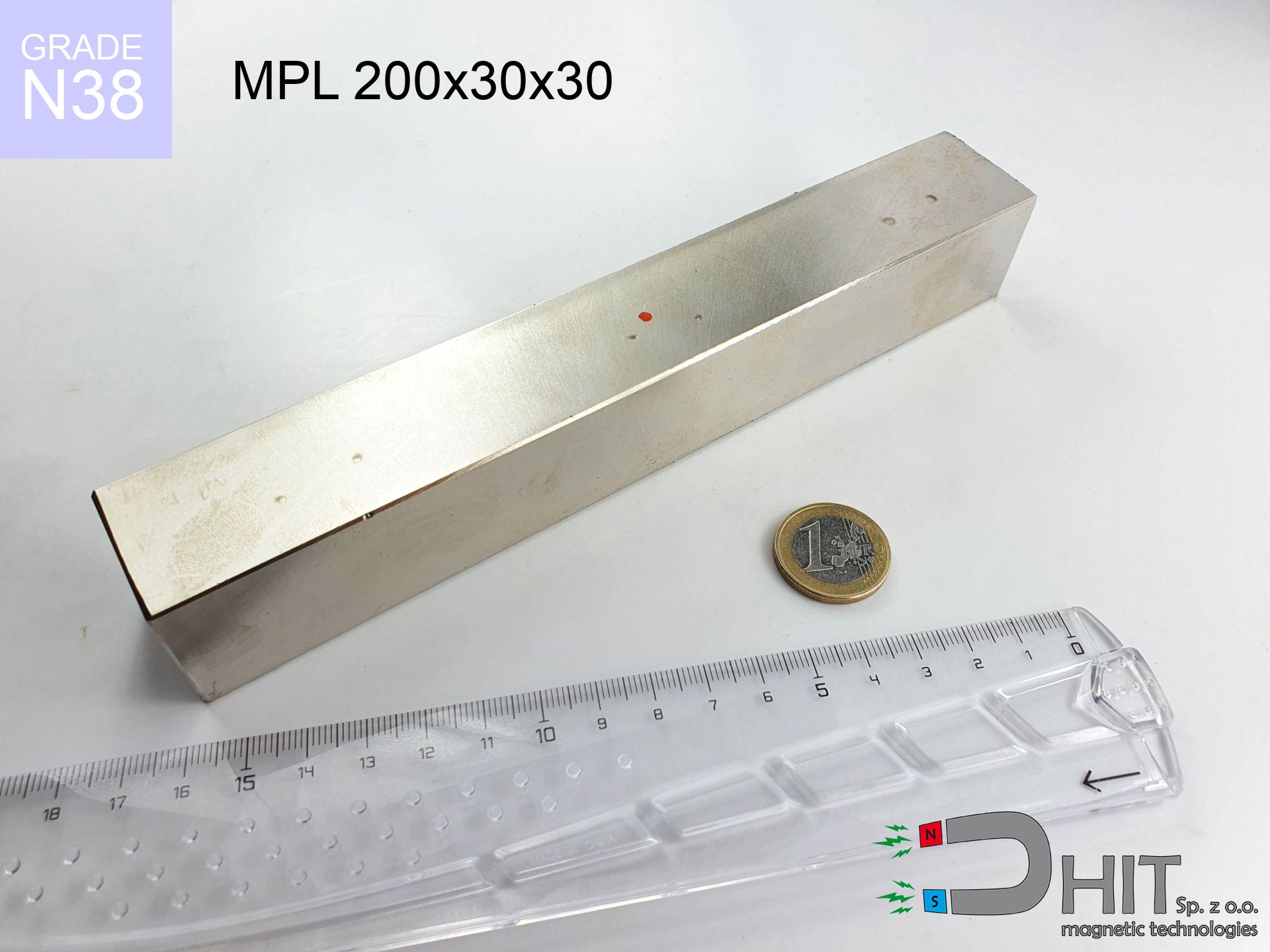HH 25x7.7 [M5] / N38 - through hole magnetic holder
through hole magnetic holder
Catalog no 370482
GTIN/EAN: 5906301814924
Diameter Ø
25 mm [±1 mm]
Height
7.7 mm [±1 mm]
Weight
23.8 g
Magnetization Direction
↑ axial
Load capacity
17.00 kg / 166.71 N
Coating
[NiCuNi] Nickel
11.44 ZŁ with VAT / pcs + price for transport
9.30 ZŁ net + 23% VAT / pcs
bulk discounts:
Need more?
Call us
+48 22 499 98 98
if you prefer get in touch through
inquiry form
the contact section.
Specifications and shape of a neodymium magnet can be reviewed with our
our magnetic calculator.
Same-day processing for orders placed before 14:00.
Physical properties - HH 25x7.7 [M5] / N38 - through hole magnetic holder
Specification / characteristics - HH 25x7.7 [M5] / N38 - through hole magnetic holder
| properties | values |
|---|---|
| Cat. no. | 370482 |
| GTIN/EAN | 5906301814924 |
| Production/Distribution | Dhit sp. z o.o. |
| Country of origin | Poland / China / Germany |
| Customs code | 85059029 |
| Diameter Ø | 25 mm [±1 mm] |
| Height | 7.7 mm [±1 mm] |
| Weight | 23.8 g |
| Magnetization Direction | ↑ axial |
| Load capacity ~ ? | 17.00 kg / 166.71 N |
| Coating | [NiCuNi] Nickel |
| Manufacturing Tolerance | ±1 mm |
Magnetic properties of material N38
| properties | values | units |
|---|---|---|
| remenance Br [min. - max.] ? | 12.2-12.6 | kGs |
| remenance Br [min. - max.] ? | 1220-1260 | mT |
| coercivity bHc ? | 10.8-11.5 | kOe |
| coercivity bHc ? | 860-915 | kA/m |
| actual internal force iHc | ≥ 12 | kOe |
| actual internal force iHc | ≥ 955 | kA/m |
| energy density [min. - max.] ? | 36-38 | BH max MGOe |
| energy density [min. - max.] ? | 287-303 | BH max KJ/m |
| max. temperature ? | ≤ 80 | °C |
Physical properties of sintered neodymium magnets Nd2Fe14B at 20°C
| properties | values | units |
|---|---|---|
| Vickers hardness | ≥550 | Hv |
| Density | ≥7.4 | g/cm3 |
| Curie Temperature TC | 312 - 380 | °C |
| Curie Temperature TF | 593 - 716 | °F |
| Specific resistance | 150 | μΩ⋅cm |
| Bending strength | 250 | MPa |
| Compressive strength | 1000~1100 | MPa |
| Thermal expansion parallel (∥) to orientation (M) | (3-4) x 10-6 | °C-1 |
| Thermal expansion perpendicular (⊥) to orientation (M) | -(1-3) x 10-6 | °C-1 |
| Young's modulus | 1.7 x 104 | kg/mm² |
Elemental analysis
| iron (Fe) | 64% – 68% |
| neodymium (Nd) | 29% – 32% |
| boron (B) | 1.1% – 1.2% |
| dysprosium (Dy) | 0.5% – 2.0% |
| coating (Ni-Cu-Ni) | < 0.05% |
Environmental data
| recyclability (EoL) | 100% |
| recycled raw materials | ~10% (pre-cons) |
| carbon footprint | low / zredukowany |
| waste code (EWC) | 16 02 16 |
See also proposals
Pros and cons of rare earth magnets.
Advantages
- They do not lose power, even during nearly 10 years – the drop in strength is only ~1% (based on measurements),
- They have excellent resistance to weakening of magnetic properties due to external magnetic sources,
- By covering with a decorative coating of nickel, the element acquires an modern look,
- Neodymium magnets deliver maximum magnetic induction on a small surface, which increases force concentration,
- Made from properly selected components, these magnets show impressive resistance to high heat, enabling them to function (depending on their form) at temperatures up to 230°C and above...
- In view of the option of flexible molding and adaptation to specialized solutions, magnetic components can be modeled in a wide range of shapes and sizes, which makes them more universal,
- Fundamental importance in high-tech industry – they serve a role in data components, brushless drives, medical equipment, also multitasking production systems.
- Compactness – despite small sizes they generate large force, making them ideal for precision applications
Limitations
- They are fragile upon heavy impacts. To avoid cracks, it is worth securing magnets in special housings. Such protection not only shields the magnet but also increases its resistance to damage
- When exposed to high temperature, neodymium magnets suffer a drop in strength. Often, when the temperature exceeds 80°C, their power decreases (depending on the size and shape of the magnet). For those who need magnets for extreme conditions, we offer [AH] versions withstanding up to 230°C
- When exposed to humidity, magnets start to rust. For applications outside, it is recommended to use protective magnets, such as magnets in rubber or plastics, which secure oxidation as well as corrosion.
- Limited ability of creating nuts in the magnet and complicated shapes - recommended is casing - magnetic holder.
- Health risk resulting from small fragments of magnets can be dangerous, in case of ingestion, which becomes key in the context of child safety. It is also worth noting that small components of these products are able to be problematic in diagnostics medical in case of swallowing.
- Due to neodymium price, their price is higher than average,
Pull force analysis
Detachment force of the magnet in optimal conditions – what affects it?
- using a sheet made of low-carbon steel, serving as a magnetic yoke
- with a cross-section no less than 10 mm
- with a plane cleaned and smooth
- with direct contact (without paint)
- during detachment in a direction vertical to the mounting surface
- at room temperature
Lifting capacity in real conditions – factors
- Distance – the presence of foreign body (paint, dirt, air) interrupts the magnetic circuit, which reduces power steeply (even by 50% at 0.5 mm).
- Force direction – catalog parameter refers to detachment vertically. When attempting to slide, the magnet holds significantly lower power (typically approx. 20-30% of maximum force).
- Steel thickness – too thin sheet does not close the flux, causing part of the flux to be escaped to the other side.
- Steel grade – the best choice is high-permeability steel. Cast iron may have worse magnetic properties.
- Smoothness – ideal contact is possible only on polished steel. Rough texture reduce the real contact area, reducing force.
- Thermal conditions – neodymium magnets have a negative temperature coefficient. At higher temperatures they are weaker, and at low temperatures gain strength (up to a certain limit).
Holding force was checked on the plate surface of 20 mm thickness, when the force acted perpendicularly, whereas under shearing force the lifting capacity is smaller. Moreover, even a slight gap between the magnet and the plate lowers the load capacity.
Precautions when working with NdFeB magnets
Crushing force
Big blocks can break fingers in a fraction of a second. Under no circumstances put your hand between two attracting surfaces.
Life threat
Patients with a pacemaker should keep an large gap from magnets. The magnetism can interfere with the operation of the implant.
Product not for children
Neodymium magnets are not intended for children. Eating multiple magnets can lead to them attracting across intestines, which constitutes a direct threat to life and necessitates urgent medical intervention.
Precision electronics
Remember: rare earth magnets produce a field that interferes with sensitive sensors. Keep a separation from your mobile, device, and navigation systems.
Machining danger
Drilling and cutting of neodymium magnets carries a risk of fire hazard. Magnetic powder reacts violently with oxygen and is hard to extinguish.
Nickel coating and allergies
Certain individuals have a contact allergy to nickel, which is the common plating for neodymium magnets. Prolonged contact might lead to an allergic reaction. We strongly advise use safety gloves.
Electronic hazard
Equipment safety: Neodymium magnets can ruin payment cards and sensitive devices (pacemakers, hearing aids, timepieces).
Powerful field
Before use, read the rules. Uncontrolled attraction can break the magnet or hurt your hand. Think ahead.
Fragile material
Protect your eyes. Magnets can fracture upon violent connection, ejecting sharp fragments into the air. We recommend safety glasses.
Permanent damage
Regular neodymium magnets (grade N) lose magnetization when the temperature goes above 80°C. Damage is permanent.

![Magnet with hole HH 25x7.7 [M5] / N38 Magnet with hole HH 25x7.7 [M5] / N38](https://cdn3.dhit.pl/graphics/banners/magnet.webp)
![HH 25x7.7 [M5] / N38 - through hole magnetic holder](https://cdn3.dhit.pl/graphics/products/hh-25x7.7-m5-pov.jpg)





